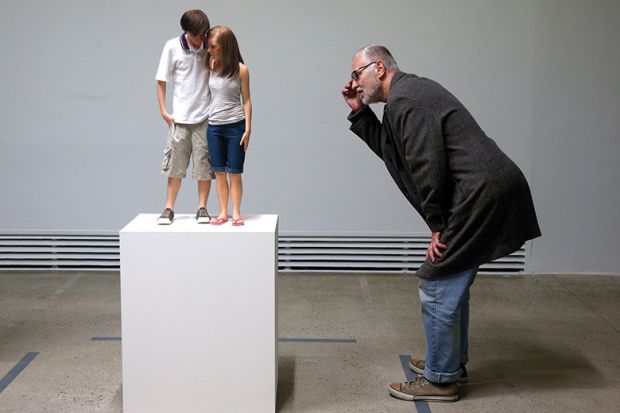Shortly after I was appointed editor of Times Higher Education, a reader wrote in to observe – somewhat archly, I thought at the time – that “editors, like policemen, seem to be getting younger”.
We published the letter, and another reader got in touch to suggest that there was only one answer when faced with the perennial non-question: “You’re young, aren’t you?”
The correct reply, he advised, is: “Yes – it’s something I’m working to put right one day at a time.”
Age is a funny old thing. You can be too young or too old. Not fresh enough, or not experienced enough. Age is one of the first ways people pigeonhole others, yet it’s rarely the lens through which we see ourselves.
In scientific research, there’s an adage that you’re past your prime at 30. Paul Dirac said it in verse: “Age is, of course, a fever chill/that every physicist must fear/He’s better dead than living still/when once he’s past his 30th year.” Dirac himself won the Nobel Prize in Physics in 1933 at the age of 31.
But for universities themselves, the perception has long been that age is an unqualified good, and there’s no getting away from the fact that the top of the world rankings is dominated by institutions with a bit of history under their belts (the average top 200 university is almost 200 years old).
This, however, is not the whole story, and readers of THE will know of countless examples of young universities that are doing extraordinary things. Some of these are very much in the model of the ancient university down the road. Others are quite different, and it’s probably from those that make a virtue of their youth and ditch the status quo that we can learn the most.
In our cover story, we take an in-depth look at six very young institutions – some of which have been up and running for just a couple of years – to get a sense of the new models being tested in 2017. These include an Indian institution founded by a wealthy industrial family, but with input from global higher education luminaries; an elite private institution that shook up the establishment with its attempt to rival the prestige of an Oxbridge college; and a government-backed university in the Gulf with faculty flown in from established Western systems.
The last of these has been a hallmark of the development agenda in the Gulf and the Middle East region over the past decade as countries have attempted to move away from their reliance on the fossil fuel industry and spark the hallowed “knowledge economy”.
This has seen institutions with extraordinary budgets and incredible ambitions appear almost overnight – typically relying on faculty and leadership teams flown in to breathe academic life into what would otherwise be an expensive collection of buildings designed by the latest starchitect.
This week’s feature is timed to accompany the launch of our Young University Rankings and the Young Universities Summit, which is taking place at Queensland University of Technology in Australia.
Writing in the rankings supplement, Jamil Salmi, formerly of the World Bank, gives a personal guide to how not to set up a new university. Among the common pitfalls he identifies are putting buildings first (literally, as in seeing infrastructure as the priority, and metaphorically, by designing the facilities before the curriculum); importing all the content from elsewhere (especially when it is just about copying the likes of Oxford or Harvard); and, yes, caring too much about rankings.
“Too often, politicians and university leaders mistake the measuring instrument for the goal,” Salmi writes. Instead, he advises, new institutions – like any other – should “work relentlessly at increasing the quality of teaching and learning and improving their research output”. These are the universities that will do well in rankings, and they won’t need to fixate on them. In other words, focus on what you’re good at and on what matters. Sometimes the best advice is the old advice.
后记
Print headline: Youth is no impediment
